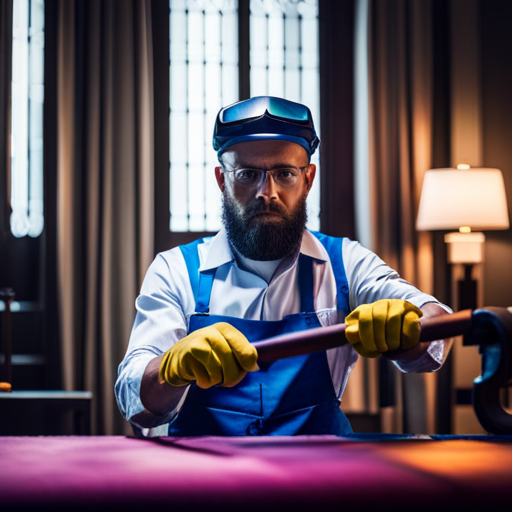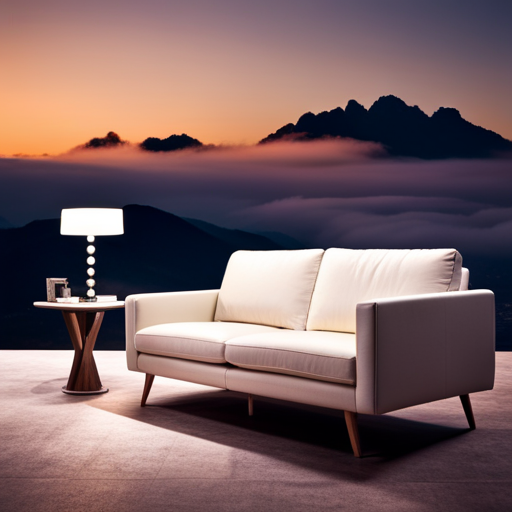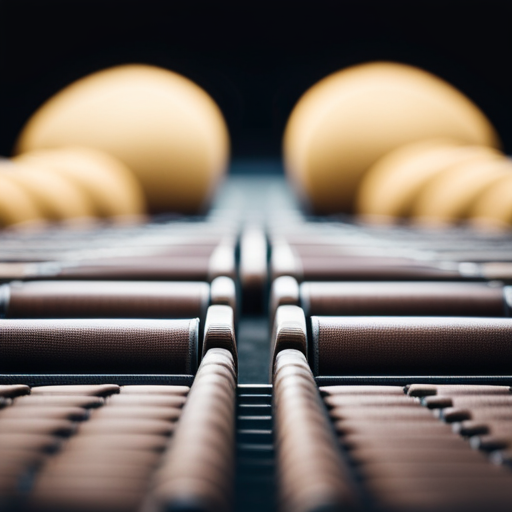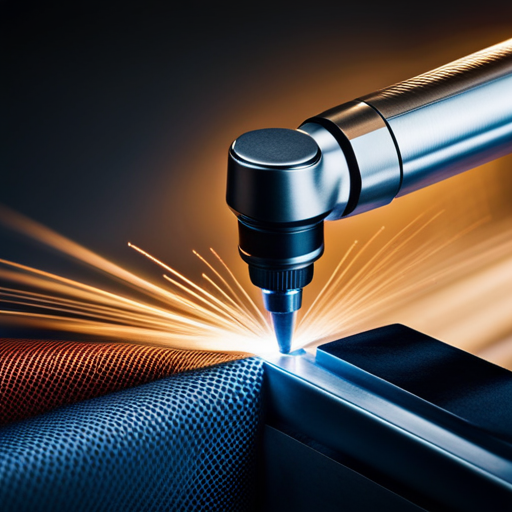The Psychology of Color in Upholstery Design
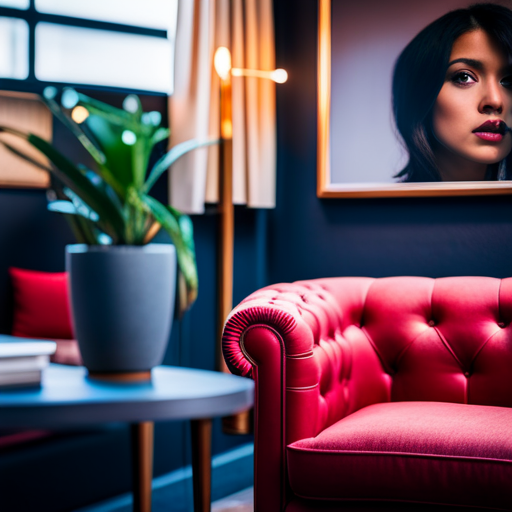
In the realm of upholstery design, color is more than a mere aesthetic choice; it is a powerful tool that influences emotions, perceptions, and behaviors.
This article delves into the intricate psychology of color in upholstery design, exploring its impact on creating harmonious and inviting spaces.
From evoking specific emotions to altering the perception of space, the strategic use of color in upholstery design can profoundly shape the way we experience and interact with our surroundings.
The Impact of Color on Emotions
The choice of color in upholstery design can significantly influence the emotions evoked in a room’s occupants. This is rooted in the principles of color psychology, where different colors are believed to elicit specific emotional responses. Understanding the emotional impact of colors is crucial in upholstery design as it directly affects the atmosphere and mood of a space.
For example, warm colors like red, orange, and yellow are often associated with energy, warmth, and comfort, while cooler tones such as blue and green can evoke feelings of calmness and tranquility. Color psychology suggests that red can stimulate conversation and appetite, making it a popular choice for dining areas. On the other hand, blue is known for its calming effect, often used in spaces intended for relaxation, such as bedrooms or lounges.
These emotional responses to color can be harnessed in upholstery design to create specific moods within a room, whether it’s to promote focus and productivity in a workspace or to encourage relaxation and comfort in a living area. Therefore, the careful selection of colors in upholstery design plays a pivotal role in shaping the overall emotional experience of a room’s occupants.
Perception of Space and Depth
When considering upholstery design, the perception of space and depth is crucial. The use of color can create visual illusions that make a room appear larger or smaller.
Additionally, strategic color placement can help in creating focal points and directing the viewer’s attention to specific areas within the space.
Color and Visual Illusions
Color in upholstery design can create visual illusions that affect the perception of space and depth.
The use of different colors can manipulate visual perception, creating optical effects that alter the sense of space within a room. For instance, warm and dark colors tend to visually advance, making a room feel cozier and more intimate, while cool and light colors recede, creating a sense of openness and airiness.
Additionally, color can also create cognitive illusions through visual processing, where certain color combinations can distort the perception of depth and dimension.
Impact on Room Size
An upholstery design’s impact on a room’s size and perception of space and depth is influenced by the strategic deployment of color. Color contrast plays a crucial role in creating the illusion of space within a room. By using contrasting colors in upholstery design, it is possible to visually expand or contract the perceived size of a room.
Additionally, illusion effects can be created through the use of color gradients and patterns, further influencing the perception of depth within a space. The strategic placement of light and dark hues can also contribute to the visual expansion or contraction of a room.
Furthermore, the incorporation of complementary colors can create a sense of balance and harmony, which in turn affects the perception of space within a room.
Creating Focal Points
The strategic creation of focal points in upholstery design, through the use of color and pattern, enhances the perception of space and depth within a room.
By incorporating visual interest and balance, designers can manipulate the focal points to direct attention and create a sense of depth.
Contrast plays a critical role in this process, as it emphasizes certain elements and draws the eye to specific areas within the room. Utilizing contrasting colors or patterns in the upholstery can help to establish focal points that add dimension to the space.
Emphasis on particular pieces of furniture through upholstery design can also create a visual hierarchy, further enhancing the perception of depth.
When executed thoughtfully, the creation of focal points in upholstery design can significantly impact the overall perception of space within a room.
Color Associations and Symbolism
Associations with color can evoke strong emotional responses and convey specific meanings within upholstery design. Color psychology plays a crucial role in understanding the impact of different colors on human emotions and behavior.
Additionally, cultural influences contribute to the varied interpretations of colors. When it comes to upholstery design, color associations and symbolism can significantly influence the overall ambiance and perception of a space.
Here are some key associations and symbolic meanings of colors in upholstery design:
-
Red: Often associated with passion, energy, and warmth, red upholstery can create a bold and dynamic focal point in a room.
-
Blue: Symbolizing tranquility, trust, and stability, blue upholstery can evoke a sense of calm and relaxation.
-
Yellow: Representing joy, optimism, and creativity, yellow upholstery can add vibrancy and cheerfulness to a space.
-
Green: Associated with nature, growth, and harmony, green upholstery can bring a sense of balance and rejuvenation to an environment.
-
Purple: Symbolizing luxury, spirituality, and mystery, purple upholstery can add a touch of elegance and sophistication to a room.
Understanding these color associations and symbolism is essential in creating upholstery designs that resonate with the desired emotional and cultural context, ultimately influencing behavior and well-being.
Influence on Behavior and Well-being
Color psychology in upholstery design has a significant influence on human behavior and well-being. The choice of colors in upholstery can evoke various emotional and psychological responses, ultimately impacting the overall well-being of individuals. Different colors have distinct behavioral effects on people.
For example, warm colors such as red and orange can create a sense of warmth, energy, and excitement, which may stimulate conversation and interaction in social settings. On the other hand, cool colors like blue and green are known for their calming and soothing effects, which can help reduce stress and anxiety, contributing to a sense of relaxation and well-being.
Moreover, the psychological impact of color in upholstery design extends to individual behaviors as well. For instance, bright and vibrant colors can uplift mood and motivation, influencing productivity and creativity in work environments. Similarly, the use of soft, muted tones can promote a sense of tranquility and harmony, encouraging a peaceful and restful atmosphere in spaces designed for relaxation.
Harmonizing Color Schemes in Design
When harmonizing color schemes in upholstery design, considering the interaction of different hues becomes pivotal for achieving a cohesive and visually appealing aesthetic. The careful selection and arrangement of colors can significantly impact the overall atmosphere of a space, influencing interior harmony and the emotional responses of individuals within that environment.
To achieve a harmonious color scheme in upholstery design, the following factors should be taken into consideration:
-
Color Psychology: Understanding the psychological effects of different colors is essential in creating a harmonious design that evokes the desired emotions and behaviors in the space.
-
Interior Harmony: The chosen color scheme should complement the existing interior decor and architectural elements, ensuring a cohesive and unified look throughout the space.
-
Complementary Colors: Incorporating complementary colors can create a visually balanced and harmonious upholstery design, adding depth and interest to the overall aesthetic.
-
Design Balance: Balancing warm and cool tones, as well as light and dark shades, is crucial for achieving a harmonious color scheme that promotes a sense of equilibrium and tranquility.
Practical Considerations for Upholstery Choices
Selecting the appropriate upholstery fabric involves carefully weighing practical considerations such as durability, maintenance requirements, and fabric composition. When choosing upholstery, it’s essential to consider the fabric’s durability to ensure it can withstand daily wear and tear, especially in high-traffic areas. Additionally, maintenance requirements play a crucial role in the longevity and appearance of the upholstery, as some materials may require more frequent cleaning or special care. Comfort and support are also important factors to consider, as the upholstery should provide a pleasant and supportive seating experience.
| Practical Considerations | Description |
|---|---|
| Durability | Choose fabrics with high rub counts or double rubs for increased durability. Consider factors like pets, children, and frequency of use. |
| Maintenance | Evaluate the ease of cleaning and maintenance. Some fabrics may be more stain-resistant or machine washable, making them suitable for specific environments. |
| Comfort and Support | Look for fabrics that offer both comfort and support, ensuring a pleasant seating experience without compromising durability. |
Carefully considering these practical aspects will help in selecting upholstery that not only complements the design but also meets the functional needs of the space.
Frequently Asked Questions
How Can Color in Upholstery Design Affect the Way People Interact With Each Other in a Shared Space?
The impact of color on communication and emotional response to color choices in shared spaces is a critical consideration. Color can influence mood and behavior, potentially enhancing or hindering interactions between individuals. Understanding this dynamic is essential for effective upholstery design.
Are There Specific Cultural Differences in the Psychology of Color That Should Be Considered When Choosing Upholstery for a Diverse Audience?
Cultural influences play a significant role in color perception, impacting emotional responses and visual impact. When choosing upholstery for a diverse audience, it’s crucial to consider these differences to create a harmonious and inclusive environment.
What Impact Does the Texture of Upholstery Fabric Have on the Psychological Effects of Color in a Space?
The texture of upholstery fabric has a significant impact on color perception in a space. Different textures can alter the way colors are perceived, influencing the psychological effects of the environment and the emotional response of individuals.
Can the Psychology of Color in Upholstery Design Be Used to Enhance Productivity and Creativity in Work Environments?
Color psychology in upholstery design can enhance ambiance and boost productivity in work environments. Research shows that 70% of employees feel more productive in a colorful workspace. Strategic use of colors can positively impact creativity and focus.
Are There Specific Color Combinations That Are Known to Have a Calming or Soothing Effect on Individuals in a Healthcare or Therapeutic Setting?
Color combinations in therapeutic settings can indeed have a calming effect, impacting shared spaces interactions. Cultural considerations play a role, as certain colors may evoke different emotional responses. Texture also impacts the overall ambiance.
Conclusion
In conclusion, the psychology of color in upholstery design plays a significant role in evoking emotions, influencing behavior, and creating a harmonious space.
Just as a master painter carefully selects colors to bring a canvas to life, upholstery designers must consider the impact of color on the overall ambiance of a room.
By understanding the psychological effects of color, designers can create meaningful and impactful upholstery designs that resonate with individuals on a subconscious level.

Dillon Hince, an expert in the realm of upholstery welding, brings a wealth of knowledge and experience to the craft. As the driving force behind nodpu.com, Dillon combines a passion for precision and creativity, offering unique insights into the art of seamlessly melding fabrics and materials. With a commitment to excellence, Dillon Hince is your go-to resource for innovative upholstery welding techniques, transforming ordinary pieces into extraordinary works of functional art.

